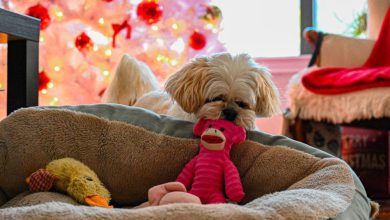
Like humans, dogs can also develop certain fears. It could be a person, place, object, or situation. More often than not, dogs tend to be more fearful simply because they are wired that way. The behavior can also be attributed to poor socialization during puppyhood, as well as to unpleasant experiences in the past. Through early intervention, you can have better chances of getting rid of Fido’s fear. As a matter of fact, working through your dog’s fear right after the frightening event occurs, will help you in easing his distress faster even in just a single session.
Basic Principles Used in Working through Your Dog’s Fear
- Consult your vet. Have a vet check your pooch and run some tests to diagnose health problems that could have been setting off his pain, sickness, or any form of disability. Work with your vet in treating the problem and visit him on a regular basis.
- Assess the problem. Can you remember a certain event that must have triggered your pooch’s fear? Is it something dangerous? How can you keep him safe? Do you think the people and other animals around you could now be in danger because of your pooch’s fearful behavior? What can you do about it? Can you think of a way to protect your dog from going through this fear as you work through modifying his behavior? If you believe it would be better to keep your pooch from the triggering situation instead of finding ways to treat his fear, then try to give him some time to get used to your new plan.
- Plan your steps. When it comes to treating your dog’s fear, it is important that you plan the steps necessary for conditioning him little by little to the feared person, place, object, or situation. Plan carefully how you will gradually lessen the distance from the feared thing, step up the intensity, and extend the duration of exposure. Advance really slowly based on a pace that your dog is completely comfortable about. Just be patient and never push your pooch too fast.
- Use positive reinforcement. Identify what specific things your dog finds very rewarding. For you to have a better chance at helping him overcome his fear, try using incentives such as food treats that Fido loves, regular meals, games that he enjoys playing, retrieving, and special toys each time he shows confidence. Only reward the behavior that seems to be hitting your goal. Never reward his fearfulness and never punish him when he acts fearful.
Once you suspect that your pooch is developing a particular fear of something, try getting help quickly. Remember that proper intervention during his early development can go a long way in training him to become a well-adjusted companion. Never let an opportunity of correcting his behavior pass since his fearful behavior could grow stronger with time.



